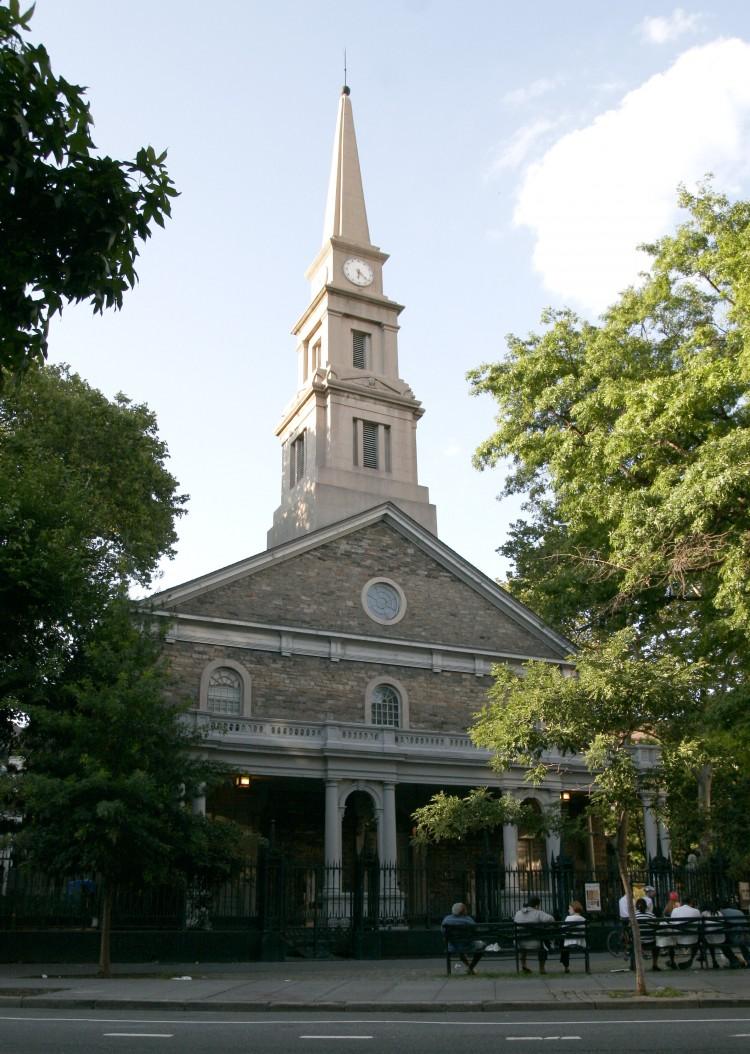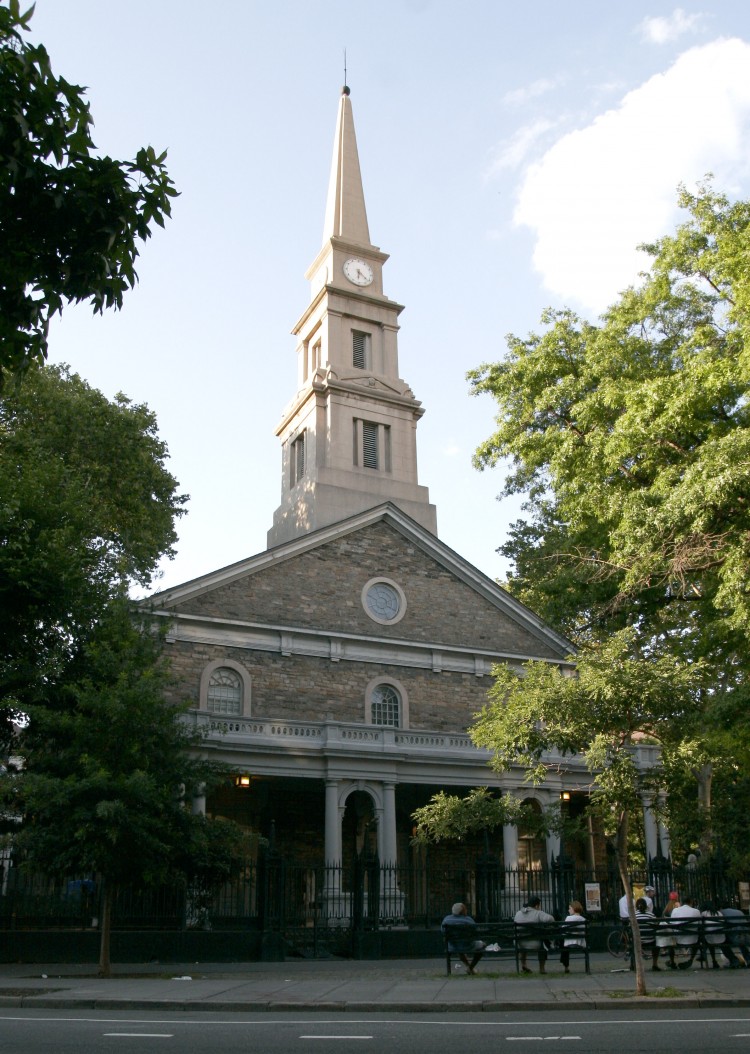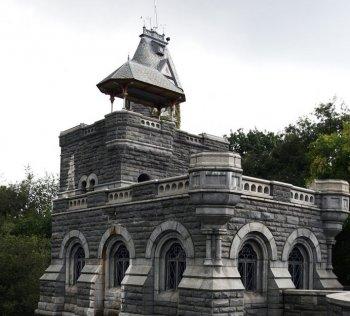Architect: John McComb Jr.
Year built: 1799
NEW YORK—Set back from 10th Street at Second Avenue in the East Village at an angle that defies, or rather, predates the grid that the rest of Manhattan has conformed to is the oldest known site of continuous religious practice on the island of Manhattan—St. Mark’s Church-in-the-Bowery.
Its façade is aligned with near by Stuyvesant Street, a short diagonal jaunt that has also survived Manhattan’s orthogonal layout—and for good reason; the church was built on Peter Stuyvesant’s “bouwerie,” the Dutch word for farm. Stuyvesant, the governor of New Amsterdam from 1647 to 1664, bought a large tract of land from the Dutch West India Trading Co. in 1651 to farm, and the church was later built on the site of the family chapel.
Stuyvesant died in 1672 and was interred in a vault beneath where the church now stands. In 1793 Stuyvesant’s great grandson Petrus sold the land the chapel stood on to the Episcopal Church for $1 under the condition that they build a church for the “Bowery community” that had grown up around the Stuyvesant farm.
The Federal style church was completed in 1799. The building was constructed of schist, the bedrock that lies under Manhattan. It has gone through many upgrades and renovations throughout the years. In 1828 the steeple was added and later an addition to the parish hall was constructed. In 1836 the church was renovated, soon after the cast iron fence that still surrounds the church was added. The Italianate portico was added in 1854. A major restoration was undertaken following a devastating fire in July 1978.
To the east and west of the main church are burial vaults for some of New York’s prominent early families, including former vice president and governor of New York Daniel D. Tompkins (1774-1825), and Alexander Turney Stewart—a wealthy merchant who was buried on church grounds in 1876. In a macabre twist, three weeks after being buried, his body was stolen and held for ransom, his wife eventually paid $20,000 for the return of his body.
In addition to ongoing church services St. Mark’s has had an active role in supporting and promoting the arts over the years. In 1920 two statues Inspiration and Aspiration were unveiled and still reside outside the church. Playwright Sam Shepard produced his first two plays in the church, dancers Isadora Duncan and Martha Graham performed there, and poets William Carlos Williams and Edna St. Vincent Millay have read their works at the church.
The church is officially listed on the National Register of Historic Places and was designated a New York City Landmark in 1966.
New York City Structures: St. Mark’s Church-in-the-Bowery
The oldest known site of continuous religious practice on the island of Manhattan—St. Mark’s Church-in-the-Bowery.
By tim.mcdevitt
7/5/2011
Updated: 10/1/2015




Friends Read Free